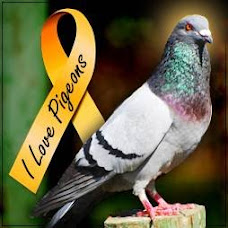"As for those who enjoy playing with the pigeons, I think it is my duty to suggest that we follow the Humane Society’s plan for the city, called “safe feeding zones.” In negotiations with Councilman Simcha Felder (44th District, Brooklyn), the HS is working with city lawyers to draw up a plan that will allow the feeding of pigeons in parks, on the grass, away from the heavily trafficked areas.
We can do the same thing at Columbia. We can feed the pigeons only on the grassy areas and abstain from inviting them to dine on the steps or any concrete places where people may sit. At least on the grass, their poop can actually function as fertilizer, and those of us who relax on the grass generally do so in our casual clothes, not our Sunday finest.
The Humane Society also advises that we feed only as much as the birds will consume in five to ten minutes, rather than feed with the clockwork regularity that conditions the birds to appear at the same place, same time, every day—and attract more and more of their compatriots over time."
Here are some examples of how other areas have dealt with pigeons in their cities. (Source: PETA)
✔Basel, Switzerland: From 1988 to 1992, Basel halved its street pigeon population through an integrated management program. The city had previously tried trapping, shooting, and oral contraceptives, all of which failed to effectively reduce pigeon numbers. Identifying the limitation of food sources as the only solution, the world’s leading scientist in the field, Professor Daniel Haag Wackernagel of the University of Basel, recommended that the city mount a public education campaign emphasizing that public feeding was the root of the problem and explaining the ultimate harm to the pigeons. Basel built lofts in city buildings and established areas where feeding was permitted near the lofts. Eggs were removed from the lofts, and during the four-year period of Haag-Wackernagel’s oversight, the pigeon population was reduced by 50 percent.
✔Augsburg, Germany: Augsburg currently has seven pigeon lofts in the city and is close to completing an eighth. The number of lofts is expected to grow to 15 by the end of 2006. In 2002 alone, 12,000 eggs were removed from the new lofts. Augsburg has seen a marked reduction in damage to buildings because the pigeon droppings are collected largely in the lofts.
✔Aachen, Germany: After acknowledging that trapping and killing pigeons was not making “any noticeable change” to the pigeon numbers, Aachen has now installed seven pigeon lofts that are maintained by volunteer staff and activists. A spokesperson for the city said that the city wants to continue with the integrated program because the lofts are producing the desired results.
✔Paris, France: The city had tried conventional control methods but did not obtain satisfactory results, so in 2003, Paris put up its first pigeon loft. Paris has chosen to addle (shake) the eggs to prevent them from hatching. The program has the support of the French Society for the Protection of City Birds. A spokesperson for the city said that the new plan works to “improve relations between Parisians and these birds” and reduces the damage caused by droppings.
✔Nottingham City Hospital, U.K.: A good example of the effectiveness of the PiCAS method in a commercial setting, the 60-acre hospital started killing some of its 1,200-strong resident pigeon population in 1999 but stopped immediately because of a public outcry. The hospital then brought in PiCAS to devise a humane control program and reduced its pigeon population by 50 percent within a year. The population in 200 was further reduced to 360 birds, and a recent survey has counted only 62 resident birds on site. This massive reduction was achieved exclusively by using nonlethal methods of control. The hospital won the 2003Royal Society for the Protection of Animals (UK) Best Practice Award for its humane and effective program in association with PiCAS.
The PiCAS Method in Action: Proven and Ongoing Successes
Some examples of places where this method has worked and is working to reduce and manage pigeon populations in Europe include the following:
As an example of construction and maintenance costs, the German city of Augsburg found it more expensive, according to the city’s finance officer, to employ lethal controls and constantly clean buildings than to introduce an integrated program. Currently, the city spends about $2,000 on construction materials for each dovecote or $15,000 if it contracts to have the dovecote constructed. The dovecotes are cleaned and maintained two to three times a week, which takes approximately three hours for each visit. Augsburg also uses community volunteers to keep costs low, and PETA can work with communities to locate and organize volunteers to aid in
running the PiCAS program.
If the more intricate and picturesque dovecotes such as those found in Augsburg are not desired, simpler features such as wall-mounted nesting boxes that can cost as little as $40 to $60 each or pigeon “lofts” that cost $400 to $600 can be constructed. All these options are effective and can simply be tailored to suit the available budget and the aesthetics of the designated site. As long as the facility has been constructed with the needs and behaviors of the pigeons in mind and has been erected on an appropriate site, pigeons will begin to take up residence and can be managed from the site. Perhaps the biggest benefit for cities in adopting a PiCAS
program is the savings that PiCAS can arrange for commercial property owners in the city. As noted above, one of the key features of the PiCAS method is working with property owners to ensure that their buildings are adequately and properly pigeon-proofed in order to make that area as unattractive to pigeons as possible. Pigeon-proofing can be achieved through a range of deterrents such as anti-roosting spikes, and PiCAS has extensive experience working with property owners to determine how best to address their individual concerns. PiCAS can offer the client sources for a wide range of control options and deterrents that will not only be completely effective in the long term but also can be obtained at a fraction of the cost that a commercial PCO would charge. For example, PiCAS has a noncommercial relationship with a U.K. producer of antiroosting devices that, having established a presence in Florida, can supply top-quality stainless-steel anti-roosting spikes to U.S. clients for less than even the wholesale price. U.S. clients who confirm that they will solely use nonlethal controls to address pigeon issues can enjoy a further 15 percent discount on these products, making the humane pigeon control option even more cost-effective.
It is also worthwhile to consider the possibility of offering a franchise to sell high-quality pigeon feed adjacent to the designated feeding area. This would ensure that the right food was offered to pigeons (rather than large quantities of processed food that not only would be damaging to their health, but might also attract rodents and seagulls), and it would create revenue for the city to offset the costs involved in cleaning and servicing the site.
PEOPLE FOR THE ETHICAL TREATMENT OF ANIMALS
PIGEON CONTROL: PERMANENT AND HUMANE SOLUTIONS
Contact Information
Pigeon Control Advisory Service
29 Victoria Green
Witchford
Ely
Cambridgeshire CB6 2XB
United Kingdom
07981 945 662
enquiries@PiCAS.org.uk
www.PiCAS.org.uk
Stephanie Boyles, Wildlife Biologist
People for the Ethical Treatment of Animals
501 Front St.
Norfolk, VA 23510
757-622-7382, ext. 8328
StephanieB@peta.org
Sources Cited
Batz, Jeannette. “Pigeons Dropping.” St. Louis Riverfront Times 13 Jan. 1999
Broughton, P.D. “Parisians Build Home for Pigeons in Suburbs.” London Daily
Telegraph 8 Mar. 2003.
Der Spiegel. “War Against the Messengers of Peace.” 6 Jun. 2003.
Haag-Wackernagel, Daniel. “Regulation of the Street Pigeon in Basel.” Wildlife
Society Bulletin 23.2 (2002): 256-60.
Kanigher, Steve. “Family Files Suit Alleging Exposure to Pigeon Poison.” Las Vegas
Sun 3 Dec. 2003
Nottingham City Hospital. “Pigeon Control Update.” Dec. 2000












5 comments:
I'd like to see some of these population-control concepts applied to HUMANS. Of course, I already have a list of the humans I'd like to see removed.....
Who is the author Rick Shur? It only says at the bottom of the article : "The author is a member of the Columbia College class of 1975". How is it that he has that information? I googled him but could not find anything useful linked to pigeons or any other animals.
I would hate to think that the Humane Society has "secret dealings" with NYC pigeon's number one enemy, Councilman Simcha Felder. If there are such negotiations going on, why haven pigeon's friends and advocates been invited to the discussion? After all pigeons cannot speak for themselves so they need human advocates to protect them from people like Simcha Felder.
I don't like the tone of the whole thing.
When government starts messing with birds we have really seen the last of our freedom as Americans. It pisses me off to see legislation for people mentioning any kind of animal and also birth control for animals is ludicrous, cancerous and again humans need birth control not animals.
Cordially,
A. T. Chase
President/CEO
L'ORAGE Ltd.
Anna Dove of the New York Bird Club thought we might be interested in the latest chapter of the continuing saga of New York City and its resident flocks of pigeons.But first my two cents worth, to ill treat any bird makes it easier to ill treat them all and without question the feral domestic pigeon has an important place in the urban ecosystem.
-----------------------
ages
Internet Marketing
Post a Comment